Jazz is a musical style that originated at the beginning of the 20th century in African Americancommunities in the Southern United States. It was born out of a mix of African and European music traditions. From its early development until the present, jazz has incorporated music from 19th and 20th century American popular music.[1] Its West African pedigree is evident in its use of blue notes, improvisation, polyrhythms, syncopation, and the swung note.[2]
As the music has developed and spread around the world it has drawn on many different national, regional and local musical cultures giving rise, since its early 20th century American beginnings, to many distinctive styles: New Orleans jazz dating from the early 1910s, big bandswing, Kansas City jazz and Gypsy jazz from the 1930s and 1940s, bebop from the mid-1940s and on down through West Coast jazz, cool jazz, avant-garde jazz, modal jazz, free jazz, Latin jazz in various forms, soul jazz, jazz fusion and jazz rock, smooth jazz, jazz-funk, punk jazz,acid jazz, ethno jazz, jazz rap, cyber jazz, Indo jazz, M-Base, nu jazz, urban jazz and other ways of playing the music. In a 1988 interview, trombonist J.J. Johnson said, "Jazz is restless. It won't stay put and it never will".[3]
Definition
Because it spans music from Ragtime to the present day - over 100 years now - jazz can be very difficult to define. Attempts have been made to define jazz from the perspective of other musical traditions—using the point of view of European music history or African music for example—but jazz critic Joachim Berendt argues that all such attempts are unsatisfactory.[4] One way to get around the definitional problems is to define the term "jazz" more broadly. Berendt defines jazz as a "form of art music which originated in the United States through the confrontation of blacks with European music"; he argues that jazz differs from European music in that jazz has a "special relationship to time, defined as 'swing'", "a spontaneity and vitality of musical production in which improvisation plays a role"; and "sonority and manner of phrasing which mirror the individuality of the performing jazz musician".[4]
Travis Jackson has also proposed a broader definition of jazz which is able to encompass all of the radically different eras: he states that it is music that includes qualities such as "swinging", improvising, group interaction, developing an 'individual voice', and being 'open' to different musical possibilities".[5] Krin Gabbard states that “jazz is a construct” or category that, while artificial, still is useful to designate “a number of musics with enough in common to be understood as part of a coherent tradition”.[6]
While jazz may be difficult to define, improvisation is clearly one of its key elements. Early blueswas commonly structured around a repetitive call-and-response pattern, a common element in theAfrican American oral tradition. A form of folk music which rose in part from work songs and field hollers of rural Blacks, early blues was also highly improvisational. These features are fundamental to the nature of jazz. While in European classical music elements of interpretation, ornamentation and accompaniment are sometimes left to the performer's discretion, the performer's primary goal is to play a composition as it was written. European classical music has been said to be a composer's medium. Jazz, however, is often characterized as the product of egalitarian creativity, interaction and collaboration, placing equal value on the contributions of composer (if there is one) and performer, 'adroitly weigh[ing] the respective claims of the composer and the improviser'.[7]
In jazz the skilled performer will interpret a tune in very individual ways, never playing the same composition exactly the same way twice. Depending upon the performer's mood and personal experience, interactions with fellow musicians, or even members of the audience, a jazz musician/performer may alter melodies, harmonies or time signature at will.
The jazz soloist is often supported by a rhythm section who "comp", by playing chords and rhythms that outline the song structure and complement the soloist.[8] In New Orleans and Dixieland jazz, performers took turns playing the melody, while others improvised countermelodies. By the swing era, big bands were coming to rely more on arranged music: arrangements were either written or learned by ear and memorized—many early jazz performers could not read music. Individual soloists would improvise within these arrangements. Later, in bebop the focus shifted back towards small groups and minimal arrangements; the melody (known as the "head") would be stated briefly at the start and end of a piece but the core of the performance would be the series of improvisations. Later styles of jazz such as modal jazzabandoned the strict notion of a chord progression, allowing the individual musicians to improvise even more freely within the context of a given scale or mode.[9] The avant-garde and free jazz idioms permit, even call for, abandoning chords, scales, and rhythmic meters.
[edit]Debates
There have long been debates in the jazz community over the definition and the boundaries of “jazz”. Although alteration or transformation of jazz by new influences has often been initially criticized as a “debasement,” Andrew Gilbert argues that jazz has the “ability to absorb and transform influences” from diverse musical styles.[10] While some enthusiasts of certain types of jazz have argued for narrower definitions which exclude many other types of music also commonly known as "jazz," jazz musicians themselves are often reluctant to define the music they play. Duke Ellington summed it up by saying, "It's all music."[11] Some critics have even stated that Ellington's music was not jazz because it was arranged and orchestrated.[12] On the other hand Ellington's friend Earl Hines's twenty solo "transformative versions" of Ellington compositions (on Earl Hines Plays Duke Ellington recorded in the 1970s) were described by Ben Ratliff, the New York Times jazz critic, as "as good an example of the jazz process as anything out there."[13]
Commercially oriented or popular music-influenced forms of jazz have both long been criticized, at least since the emergence of Bop. Traditional jazz enthusiasts have dismissed Bop, the 1970s jazz fusion era [and much else] as a period of commercial debasement of the music. According to Bruce Johnson, jazz music has always had a "tension between jazz as a commercial music and an art form".[5] Gilbert notes that as the notion of a canon of jazz is developing, the “achievements of the past” may become "...privileged over the idiosyncratic creativity...” and innovation of current artists. Village Voice jazz critic Gary Giddins argues that as the creation and dissemination of jazz is becoming increasingly institutionalized and dominated by major entertainment firms, jazz is facing a "...perilous future of respectability and disinterested acceptance." David Ake warns that the creation of “norms” in jazz and the establishment of a “jazz tradition” may exclude or sideline other newer, avant-garde forms of jazz.[5]
Another debate that gained a lot of attention at the birth of Jazz was how it would effect the appearance of African Americans, in particular, who were a part of it. It's a dichotomy that extends from the word to the music as well. Jazz has been seen as a way to showcase contributions of African American to American society, to highlight black history and affirm black culture. But for some African American musicians, the music called jazz is a reminder of an oppressive and racist society and restrictions on their artistic visions.[14]
[edit]Etymology of "Jazz"
Main article: Jazz (word)
The origin of the word jazz has had wide spread interest – the American Dialect Society named it the Word of the Twentieth Century — which has resulted in considerable research, and its history is well documented. The word began [under various spellings] as West Coast slangaround 1912, the meaning of which varied but did not refer to music. The use of the word in a musical context was documented as early as 1915 in the Chicago Daily Tribune.[15] Its first documented use in a musical context in New Orleans appears in a November 14, 1916 Times-Picayune article about "jas bands."[16]
[edit]Origins
By 1808 the Atlantic slave trade had brought almost half a million Africans to the United States. The slaves largely came from West Africa and brought strong tribal musical traditions with them.[17] Lavish festivals featuring African dances to drums were organized on Sundays at Place Congo, or Congo Square, in New Orleans until 1843; there were similar gatherings in New Englandand New York. African music was largely functional, for work or ritual, and included work songsand field hollers. The African tradition made use of a single-line melody and call-and-responsepattern, but without the European concept of harmony. Rhythms reflected African speech patterns, and the African use of pentatonic scales led to blue notes in blues and jazz.[18]
In the early 19th century an increasing number of black musicians learned to play European instruments, particularly the violin, which they used to parody European dance music in their own cakewalk dances. In turn, European-American minstrel show performers in blackface popularized such music internationally, combining syncopation with European harmonic accompaniment. Louis Moreau Gottschalk adapted African-American cakewalk music, South American, Caribbean and other slave melodies as piano salon music. Another influence came from black slaves who had learned the harmonic style of hymns and incorporated it into their own music as spirituals.[19] The origins of the blues are undocumented, though they can be seen as the secular counterpart of the spirituals. Paul Oliver has drawn attention to similarities in instruments, music and social function to the griots of the West African savannah.[20]
[edit]1890s–1910s
[edit]Ragtime
Main article: Ragtime
The abolition of slavery led to new opportunities for the education of freed African Americans. Although strict segregation limited employment opportunities for most blacks, many were able to find work in entertainment. Black musicians were able to provide "low-class" entertainment in dances, minstrel shows, and in vaudeville, by which many marching bands formed. Black pianists played in bars, clubs, and brothels, as ragtime developed.[21][22]
Ragtime appeared as sheet music, popularized by African American musicians such as the entertainerErnest Hogan, whose hit songs appeared in 1895; two years later Vess Ossman recorded a medley of these songs as a banjo solo "Rag Time Medley".[23][24] Also in 1897, the white composer William H. Krellpublished his "Mississippi Rag" as the first written piano instrumental ragtime piece, and Tom Turpinpublished his Harlem Rag, that was the first rag published by an African-American. The classically trained pianist Scott Joplin and the acknowledged "king of ragtime" produced his "Original Rags" in the following year, then in 1899 had an international hit with "Maple Leaf Rag". He wrote numerous popular rags, including, "The Entertainer", combining syncopation, banjo figurations and sometimes call-and-response, which led to the ragtime idiom being taken up by classical composers including Claude Debussy and Igor Stravinsky. Blues music was published and popularized by W. C. Handy, whose "Memphis Blues" of 1912 and "St. Louis Blues" of 1914 both became jazz standards.[20]
[edit]New Orleans music
Main article: Dixieland
The music of New Orleans had a profound effect on the creation of early jazz. Many early jazz performers played in venues throughout the city; the brothels and bars of the red-light district around Basin Street, called "Storyville".[25] was only one of numerous neighborhoods relevant to the early days of New Orleans jazz. In addition to dance bands, numerous marching bands played at lavish funerals arranged by the African American and European American community. The instruments used in marching bands and dance bands became the basic instruments of jazz: brass and reeds tuned in the European 12-tone scale and drums. Small bands mixing self-taught and well educated African American musicians, many of whom came from the funeral-procession tradition of New Orleans, played a seminal role in the development and dissemination of early jazz, traveling throughout Black communities in the Deep South and, from around 1914 on, Afro-Creole and African American musicians playing in vaudeville shows took jazz to western and northern US cities.[26]
The cornetist Buddy Bolden led a band often mentioned as one of the prime movers of the style later to be called "jazz". He played in New Orleans around 1895–1906. No recordings remain of Bolden. Several tunes from the Bolden band repertory, including "Buddy Bolden Blues", have been recorded by many other musicians. (Bolden became mentally ill and spent his later decades in a mental institution.)
Afro-Creole pianist Jelly Roll Morton began his career in Storyville. From 1904, he toured with vaudeville shows around southern cities, also playing in Chicago and New York. His "Jelly Roll Blues", which he composed around 1905, was published in 1915 as the first jazz arrangement in print, introducing more musicians to the New Orleans style.[27] In the northeastern United States, a "hot" style of playing ragtime had developed, notably James Reese Europe's symphonic Clef Club orchestra in New York which played a benefit concert at Carnegie Hall in 1912.[28][29]The Baltimore rag style of Eubie Blake influenced James P. Johnson's development of "Stride" piano playing, in which the right hand plays the melody, while the left hand provides the rhythm and bassline.[30]
The Original Dixieland Jass Band made the music's first recordings early in 1917, and their "Livery Stable Blues" became the earliest released jazz record.[31][32][33][34][35][36][37] That year numerous other bands made recordings featuring "jazz" in the title or band name, mostly ragtime or novelty records rather than jazz. In September 1917 W.C. Handy's Orchestra of Memphis recorded a cover version of "Livery Stable Blues."[38] In February 1918 James Reese Europe's "Hellfighters" infantry band took ragtime to Europe during World War I,[39] then on return recorded Dixieland standards including "Darktown Strutters' Ball".[29]
New Orleans brass bands are a lasting influence contributing horn players to the world of professional jazz with the distinct sound of the city while helping black children escape poverty.[40] The leader of the Camelia Brass Band, D'Jalma Ganier, taught Louis Armstrong to play trumpet.
[edit]1920s and 1930s
[edit]The Jazz Age
 |
The Original Dixieland Jass Band performing "Jazz Me Blues", an example of a jazz piece from 1921.
|
| Problems listening to this file? See media help. | |
Prohibition in the United States (from 1920 to 1933) banned the sale of alcoholic drinks, resulting in illicit speakeasies becoming lively venues of the "Jazz Age", an era when popular music included current dance songs, novelty songs, and show tunes. Jazz started to get a reputation as being immoral and many members of the older generations saw it as threatening the old values in culture and promoting the new decadent values of the Roaring 20s. Professor Henry van Dyke of Princeton University wrote “...it is not music at all. It’s merely an irritation of the nerves of hearing, a sensual teasing of the strings of physical passion.”[41]
Even the media began to denigrate jazz. The New York Times took stories and altered headlines to pick at Jazz. For instance, villagers used pots and pans in Siberia to scare off bears, and the newspaper stated that it was Jazz that scared the bears away. Another story claims that Jazz caused the death of a celebrated conductor. The actual cause of death was a fatal heart attack (natural cause).[41] From 1919 Kid Ory's Original Creole Jazz Band of musicians from New Orleans played in San Francisco and Los Angeles where in 1922 they became the first black jazz band of New Orleans origin to make recordings.[42][43] However, the main centre developing the new "Hot Jazz" was Chicago, where King Oliver joined Bill Johnson. That year also saw the first recording by Bessie Smith, the most famous of the 1920s blues singers.[44]
Bix Beiderbecke formed The Wolverines in 1924. Also in 1924 Louis Armstrong joined the Fletcher Henderson dance band as featured soloist for a year, then formed his virtuosic Hot Five band, also popularizing scat singing.[45] Jelly Roll Morton recorded with the New Orleans Rhythm Kings in an early mixed-race collaboration, then in 1926 formed his Red Hot Peppers. There was a larger market for jazzy dance music played by white orchestras, such as Jean Goldkette's orchestra andPaul Whiteman's orchestra. In 1924 Whiteman commissioned Gershwin's Rhapsody in Blue, which was premièred by Whiteman's Orchestra. Other influential large ensembles includedFletcher Henderson's band, Duke Ellington's band (which opened an influential residency at theCotton Club in 1927) in New York, and Earl Hines's Band in Chicago (who opened in The Grand Terrace Cafe there in 1928). All significantly influenced the development of big band-style swing jazz.[46]
[edit]Swing
Main articles: Swing music and 1930s in jazz
The 1930s belonged to popular swing big bands, in which some virtuoso soloists became as famous as the band leaders. Key figures in developing the "big" jazz band included bandleaders and arrangers Count Basie, Cab Calloway, Jimmy and Tommy Dorsey, Duke Ellington,Benny Goodman, Fletcher Henderson, Earl Hines, Glenn Miller and Artie Shaw.
Swing was also dance music. It was broadcast on the radio 'live' nightly across America for many years especially by Hines and his Grand Terrace Cafe Orchestra broadcasting coast-to-coast from Chicago, well placed for 'live' time-zones. Although it was a collective sound, swing also offered individual musicians a chance to 'solo' and improvise melodic, thematic solos which could at times be very complex and 'important' music. Over time, social strictures regarding racial segregation began to relax in America: white bandleaders began to recruit black musicians and black bandleaders white ones. In the mid-1930s, Benny Goodman hired pianist Teddy Wilson, vibraphonist Lionel Hampton and guitarist Charlie Christian to join small groups. An early 1940s style known as "jumping the blues" or jump blues used small combos, uptempo music, and blues chord progressions. Jump blues drew on boogie-woogie from the 1930s. Kansas City Jazz in the 1930s as exemplified by tenor saxophonist Lester Young marked the transition from big bands to the bebop influence of the 1940s.
[edit]Beginnings of European jazz
Outside of the United States the beginnings of a distinct European style of jazz emerged in France with the Quintette du Hot Club de Francewhich began in 1934. Belgian guitar virtuoso Django Reinhardt popularized gypsy jazz, a mix of 1930s American swing, French dance hall "musette" and Eastern European folk with a languid, seductive feel. The main instruments are steel stringed guitar, violin, and double bass. Solos pass from one player to another as the guitar and bass play the role of the rhythm section. Some music researchers hold that it was Philadelphia's Eddie Lang and Joe Venuti who pioneered the guitar-violin partnership typical of the genre,[47] which was brought to France after they had been heard live or on Okeh Records in the late 1920s.[48]
[edit]1940s and 1950s
[edit]Dixieland revival
Main articles: 1940s in jazz and 1950s in jazz
In the late 1940s there was a revival of "Dixieland" music, harkening back to the original contrapuntal New Orleans style. This was driven in large part by record company reissues of early jazz classics by the Oliver, Morton, and Armstrong bands of the 1930s. There were two populations of musicians involved in the revival. One group consisted of players who had begun their careers playing in the traditional style, and were either returning to it, or continuing what they had been playing all along, such as Bob Crosby's Bobcats, Max Kaminsky, Eddie Condon, and Wild Bill Davison. Most of this group were originally Midwesterners, although there were a small number of New Orleans musicians involved. The second population of revivalists consisted of young musicians such as the Lu Watters band. By the late 1940s,Louis Armstrong's Allstars band became a leading ensemble. Through the 1950s and 1960s, Dixieland was one of the most commercially popular jazz styles in the US, Europe, and Japan, although critics paid little attention to it.[49]
[edit]Bebop
Main article: Bebop
See also: List of bebop musicians
In the early 1940s bebop-style performers began to shift jazz from danceable popular music towards a more challenging "musician's music." Composer Gunther Schuller wrote:
... In 1943 I heard the great Earl Hines band which had Bird in it and all those other great musicians. They were playing all the flatted fifth chords and all the modern harmonies and substitutions and Dizzy Gillespie runs in the trumpet section work. Two years later I read that that was 'bop' and the beginning of modern jazz ... but the band never made recordings.[50]
Divorcing itself from dance music, bebop established itself more as an art form, thus lessening its potential popular and commercial appeal. Dizzy Gillespie wrote:
... People talk about the Hines band being 'the incubator of bop' and the leading exponents of that music ended up in the Hines band. But people also have the erroneous impression that the music was new. It was not. The music evolved from what went before. It was the same basic music. The difference was in how you got from here to here to here ... naturally each age has got its own shit. [51]
Since bebop was meant to be listened to, not danced to, it could use faster tempos. Beboppers introduced new forms of chromaticism anddissonance into jazz; the dissonant tritone (or "flatted fifth") interval became the "most important interval of bebop"[52] and players engaged in a more abstracted form of chord-based improvisation which used "passing" chords, substitute chords, and altered chords. Drumming shifted to a more elusive and explosive style, in which the ride cymbal was used to keep time while the snare and bass drum were used for accents. The most influential bebop musicians included saxophonist Charlie Parker, pianists Bud Powell and Thelonious Monk, trumpeters Dizzy Gillespie and Clifford Brown, and drummer Max Roach.
These divergences from the jazz mainstream of the time initially met with a divided, sometimes hostile, response among fans and fellow musicians, especially established swing players, who bristled at the new harmonic sounds. To hostile critics, bebop seemed to be filled with "racing, nervous phrases".[53] Despite the initial friction, by the 1950s bebop had become an accepted part of the jazz vocabulary.
[edit]Cool jazz
By the end of the 1940s, the nervous energy and tension of bebop was replaced with a tendency towards calm and smoothness, with the sounds of cool jazz, which favoured long, linear melodic lines. It emerged in New York City, as a result of the mixture of the styles of predominantly white jazz musicians and black bebop musicians, and it dominated jazz in the first half of the 1950s. The starting point were a series of singles on Capitol Records in 1949 and 1950 of a nonet led by trumpeter Miles Davis, collected and released first on a ten-inch and later a twelve-inch as the Birth of the Cool. Cool jazz recordings by Chet Baker, Dave Brubeck, Bill Evans, Gil Evans, Stan Getz and theModern Jazz Quartet usually have a "lighter" sound which avoided the aggressive tempos and harmonic abstraction of bebop. Cool jazz later became strongly identified with the West Coast jazz scene, but also had a particular resonance in Europe, especially Scandinavia, with emergence of such major figures as baritone saxophonist Lars Gullin and pianist Bengt Hallberg. The theoretical underpinnings of cool jazz were set out by the blind Chicago pianist Lennie Tristano, and its influence stretches into such later developments as Bossa nova, modal jazz, and even free jazz. See also the List of Cool jazz and West Coast jazz musicians for further detail.
This 1941 sample of Duke Ellington's signature tune is an example of the swingstyle.
Excerpt from a saxophone solo by Charlie Parker. The fast, complex rhythms andsubstitute chords of bebop exhibited were of pivotal importance to the formation of Jazz music.
This hard blues by John Coltrane is an example of hard bop, a post-bebop style which is informed by gospel music, blues andwork songs.
This 1973 piece by the Mahavishnu Orchestra merges jazz improvisation and rock instrumentation into jazz fusion
This 2000 track by Courtney Pine shows how electronica and hip hop influences can be incorporated into modern jazz.
| |
| Problems listening to these files? See media help. | |
[edit]Hard bop
Main article: Hard bop
See also: List of Hard bop musicians
Hard bop is an extension of bebop (or "bop") music that incorporates influences from rhythm and blues, gospel music, and blues, especially in the saxophone and piano playing. Hard bop was developed in the mid-1950s, partly in response to the vogue for cool jazz in the early 1950s. The hard bop style coalesced in 1953 and 1954, paralleling the rise of rhythm and blues. Miles Davis' performance of "Walkin' ", the title track of his album of the same year, at the very firstNewport Jazz Festival in 1954, announced the style to the jazz world. The quintet Art Blakey and the Jazz Messengers, fronted by Blakey and featuring pianist Horace Silver and trumpeterClifford Brown, were leaders in the hard bop movement along with Davis.
[edit]Modal jazz
Main article: Modal jazz
Modal jazz is a development beginning in the later 1950s which takes the mode, or musical scale, as the basis of musical structure and improvisation. Previously, the goal of the soloist was to play a solo that fit into a given chord progression. However, with modal jazz, the soloist creates a melody using one or a small number of modes. The emphasis in this approach shifts from harmony to melody.[54] The modal theory stems from a work by George Russell, but againMiles Davis unveiled this shift to the rest of the jazz world with Kind of Blue, an exploration of the possibilities of modal jazz and the best selling jazz album of all time. Other innovators in this style include Jackie McLean,[55] John Coltrane and Bill Evans, also present on Kind of Blue, as well as later musicians such as Herbie Hancock.
[edit]Free jazz
Main article: Free jazz
Free jazz and the related form of avant-garde jazz broke through into an open space of "free tonality" in which meter, beat, and formal symmetry all disappeared, and a range of World music from India, Africa, and Arabia were melded into an intense, even religiously ecstatic or orgiastic style of playing.[56] While loosely inspired by bebop, free jazz tunes gave players much more latitude; the loose harmony and tempowas deemed controversial when this approach was first developed. The bassist Charles Mingus is also frequently associated with the avant-garde in jazz, although his compositions draw from myriad styles and genres. The first major stirrings came in the 1950s, with the early work of Ornette Coleman and Cecil Taylor. In the 1960s, performers included John Coltrane, Archie Shepp, Sun Ra, Albert Ayler, Pharoah Sanders, and others. Free jazz quickly found a foothold in Europe – in part because musicians such as Ayler, Taylor, Steve Lacy and Eric Dolphy spent extended periods in Europe. A distinctive European contemporary jazz (often incorporating elements of free jazz but not limited to it) flourished also because of the emergence of musicians (such as John Surman, Zbigniew Namyslowski, Albert Mangelsdorff, Kenny Wheeler and Mike Westbrook) anxious to develop new approaches reflecting their national and regional musical cultures and contexts. Keith Jarrett has been prominent in defending free jazz from criticism by traditionalists in the 1990s and 2000s.
[edit]1960s and 1970s
Main articles: 1960s in jazz and 1970s in jazz
[edit]Latin jazz
Main article: Latin jazz
Latin jazz combines rhythms from African and Latin American countries, often played on instruments such as conga, timbales, güiro, andclaves, with jazz and classical harmonies played on typical jazz instruments (piano, double bass, etc.). There are two main varieties: Afro-Cuban jazz was played in the US right after the bebop period, while became more popular in the 1960s. Afro-Cuban jazz began as a movement in the mid-1950s as bebop musicians such as Dizzy Gillespie and Billy Taylor started Afro-Cuban bands influenced by such Cuban and Puerto Rican musicians as Xavier Cugat, Tito Puente and Arturo Sandoval. Brazilian jazz such as bossa nova is derived fromsamba, with influences from jazz and other 20th century classical and popular music styles. Bossa is generally moderately paced, with melodies sung in Portuguese or English. The style was pioneered by Brazilians João Gilberto and Antônio Carlos Jobim. The related term jazz-samba describes an adaptation of bossa nova compositions to the jazz idiom by American performers such as Stan Getz and Charlie Byrd.
Bossa nova was made popular by Elizete Cardoso's recording of Chega de Saudade on the Canção do Amor Demais LP, composed by Vinícius de Moraes (lyrics) and Antonio Carlos Jobim (music). The initial releases by Gilberto and the 1959 film Black Orpheus brought significant popularity in Brazil and elsewhere in Latin America, which spread to North America via visiting American jazz musicians. The resulting recordings by Charlie Byrd and Stan Getz cemented its popularity and led to a worldwide boom with 1963's Getz/Gilberto, numerous recordings by famous jazz performers such as Ella Fitzgerald (Ella Abraça Jobim) and Frank Sinatra (Francis Albert Sinatra & Antônio Carlos Jobim) and the entrenchment of the bossa nova style as a lasting influence in world music for several decades and even up to the present.
[edit]Post-bop
Main article: Post-bop
Post-bop jazz is a form of small-combo jazz derived from earlier bop styles. The genre's origins lie in seminal work by John Coltrane, Miles Davis, Bill Evans, Charles Mingus, Wayne Shorter and Herbie Hancock. Generally, the term post-bop is taken to mean jazz from the mid-sixties onward that assimilates influence from hard bop, modal jazz, the avant-garde, and free jazz, without necessarily being immediately identifiable as any of the above.
Much "post-bop" was recorded on Blue Note Records. Key albums include Speak No Evil by Wayne Shorter; The Real McCoy by McCoy Tyner; Maiden Voyage by Herbie Hancock; Miles Smiles by Miles Davis; and Search for the New Land by Lee Morgan (an artist not typically associated with the post-bop genre). Most post-bop artists worked in other genres as well, with a particularly strong overlap with later hard bop.
[edit]Soul jazz
Main article: Soul jazz
Soul jazz was a development of hard bop which incorporated strong influences from blues, gospel and rhythm and blues in music for small groups, often the organ trio, which partnered a Hammond organ player with a drummer and a tenor saxophonist. Unlike hard bop, soul jazz generally emphasized repetitive grooves and melodic hooks, and improvisations were often less complex than in other jazz styles. Horace Silver had a large influence on the soul jazz style, with songs that used funky and often gospel-based piano vamps. It often had a steadier "funk" style groove, different from the swing rhythms typical of much hard bop. Important soul jazz organists included Jimmy McGriff andJimmy Smith and Johnny Hammond Smith, and influential tenor saxophone players included Eddie "Lockjaw" Davis and Stanley Turrentine. (See also List of soul-jazz musicians.)
[edit]Jazz fusion
Main article: Jazz fusion
In the late 1960s and early 1970s the hybrid form of jazz-rock fusion was developed by combining jazz improvisation with rock rhythms, electric instruments and the highly amplified stage sound of rock musicians such as Jimi Hendrix. All Music Guide states that "..until around 1967, the worlds of jazz and rock were nearly completely separate." However, "...as rock became more creative and its musicianship improved, and as some in the jazz world became bored with hard bop and did not want to play strictly avant-garde music, the two different idioms began to trade ideas and occasionally combine forces."[57] Miles Davis made the breakthrough into fusion in 1970 with his album Bitches Brew. Musicians who worked with Davis formed the four most influential fusion groups: Weather Report and Mahavishnu Orchestra emerged in 1971 and were soon followed byReturn to Forever and The Headhunters. Although jazz purists protested the blend of jazz and rock, some of jazz's significant innovators crossed over from the contemporary hard bop scene into fusion. Jazz fusion music often uses mixed meters, odd time signatures, syncopation, complex chords and harmonies. In addition to using the electric instruments of rock, such as the electric guitar, electric bass, electric piano and synthesizer keyboards, fusion also used the powerful amplification, "fuzz" pedals, wah-wah pedals, and other effects used by 1970s-era rock bands. Notable performers of jazz fusion included Miles Davis, keyboardists Joe Zawinul, Chick Corea, Herbie Hancock, vibraphonistGary Burton, drummer Tony Williams, violinist Jean-Luc Ponty, guitarists Larry Coryell, Al Di Meola, John McLaughlin and Frank Zappa, saxophonist Wayne Shorter and bassists Jaco Pastorius and Stanley Clarke. Jazz fusion was also popular in Japan where the bandCasiopea released over thirty fusion albums.
In the twenty-first century, almost all jazz has influences from other nations and styles of music, making jazz fusion as much a common practice as style. The host of a progressive radio jazz program, Passport to Modern Jazz on KRVS-FM, D'Jalma Garnier, plays New Orleansjazz from all periods, as well as latest contemporary and avant-garde, like the Bulgarian wedding band Ivo Papasov that successfully fuses Bulgarian folk using the kaval with American free jazz instrumentation and riffs.[58]
[edit]Jazz funk
Main article: Jazz-funk
Developed by the mid-1970s, is characterized by a strong back beat (groove), electrified sounds,[59] and often, the presence of the first electronic analog synthesizers. The integration of Funk, Soul and R&B music and styles into jazz resulted in the creation of a genre whose spectrum is indeed quite wide and ranges from strong jazz improvisation to soul, funk or disco with jazz arrangements, jazz riffs and jazz solos, and sometimes soul vocals.[60]
At the jazz end of the spectrum, jazz-funk characteristics include a departure from ternary rhythm (near-triplet), i.e. the "swing", to the more danceable and unfamiliar binary rhythm, known as the "groove". Jazz-funk also draws influences from traditional African music, Latin American rhythms and Jamaican reggae, most notably Kingston band leader Sonny Bradshaw. A second characteristic of jazz-funk music is the use of electric instruments, and the first use of analogue electronic instruments notably by Herbie Hancock, whose jazz-funk period saw him surrounded on stage or in the studio by several Moog synthesizers. The ARP Odyssey, ARP String Ensemble and Hohner D6 Clavinetalso became popular at the time. A third feature is the shift of proportions between composition and improvisation. Arrangements, melody and overall writing were heavily emphasized.
[edit]Other trends
There was a resurgence of interest in jazz and other forms of African American cultural expression during the Black Arts Movement andBlack nationalist period of the early 1970s. Musicians such as Pharoah Sanders, Hubert Laws and Wayne Shorter began using African instruments such as kalimbas, cowbells, beaded gourds and other instruments not traditional to jazz. Musicians began improvising jazz tunes on unusual instruments, such as the jazz harp (Alice Coltrane), electrically amplified and wah-wah pedaled jazz violin (Jean-Luc Ponty), and even bagpipes (Rufus Harley). Jazz continued to expand and change, influenced by other types of music, such as world music,avant garde classical music, and rock and pop music. Guitarist John McLaughlin's Mahavishnu Orchestra played a mix of rock and jazz infused with East Indian influences. The ECM record label began in Germany in the 1970s with artists including Keith Jarrett, Paul Bley, thePat Metheny Group, Jan Garbarek, Ralph Towner, Kenny Wheeler, John Taylor, John Surman and Eberhard Weber, establishing a newchamber music aesthetic, featuring mainly acoustic instruments, and sometimes incorporating elements of world music and folk music.
[edit]1980s–2010s
In 1987, the US House of Representatives and Senate passed a bill proposed by Democratic Representative John Conyers, Jr. to define jazz as a unique form of American music stating, among other things, "...that jazz is hereby designated as a rare and valuable national American treasure to which we should devote our attention, support and resources to make certain it is preserved, understood and promulgated." [61]
[edit]Traditionalist and Experimental divide
In the 1980s, the jazz community shrank dramatically and split. A mainly older audience retained an interest in traditional and straight-ahead jazz styles. Wynton Marsalis strove to create music within what he believed was the tradition, creating extensions of small and large forms initially pioneered by such artists as Louis Armstrong and Duke Ellington. In the 2000s, straight-ahead jazz continues to appeal to a core group of listeners. Well-established jazz musicians, such as Dave Brubeck, Wynton Marsalis, Sonny Rollins, Wayne Shorter and Jessica Williams continue to perform and record. In the 1990s and 2000s, a number of young musicians emerged, including US pianists Brad Mehldau, Jason Moran and Vijay Iyer, guitarist Kurt Rosenwinkel, vibraphonist Stefon Harris, trumpeters Roy Hargrove and Terence Blanchard, saxophonists Chris Potter and Joshua Redman and bassist Christian McBride.
In the United States, several musicians and groups explored the more experimental end of the spectrum, including trumpeters Rob Mazurekand Cuong Vu, saxophonist Ken Vandermark, guitarist Nels Cline, bassist Todd Sickafoose, keyboardist Craig Taborn, drummer/percussionist John Hollenbeck, guitarist John Scofield and the groups Medeski Martin & Wood and The Bad Plus. Outside of the US, the Swedish group E.S.T. and British groups Acoustic Ladyland, Led Bib and Polar Bear gained popularity with their progressive takes on jazz. A number of new vocalists have achieved popularity with a mix of traditional jazz and pop/rock forms, such as Diana Krall, Norah Jones, Cassandra Wilson, Kurt Elling and Jamie Cullum.
[edit]Smooth jazz
Main article: smooth jazz
In the early 1980s, a commercial form of jazz fusion called pop fusion or "smooth jazz" became successful and garnered significant radio airplay. Smooth jazz saxophonists include Grover Washington, Jr., Kenny G, Kirk Whalum, Boney James and David Sanborn. Smooth jazz received frequent airplay with more straight-ahead jazz in "quiet storm" time slots at radio stations in urban markets across the U.S., helping to establish or bolster the careers of vocalists including Al Jarreau, Anita Baker, Chaka Khan and Sade. In this same time period Chaka Khan released Echoes of an Era, which featured Joe Henderson, Freddie Hubbard, Chick Corea, Stanley Clarke and Lenny White. She also released the song "And the Melody Still Lingers On (Night in Tunisia)" with Dizzy Gillespie reviving the solo break from "Night in Tunisia".
In general, smooth jazz is downtempo (the most widely played tracks are in the 90–105 BPM range), layering a lead, melody-playing instrument (saxophones–especially soprano and tenor–are the most popular, with legato electric guitar playing a close second). In hisNewsweek article "The Problem With Jazz Criticism"[62] Stanley Crouch considers Miles Davis' playing of fusion as a turning point that led to smooth jazz. In Aaron J. West's introduction to his analysis of smooth jazz, "Caught Between Jazz and Pop" he states,
I challenge the prevalent marginalization and malignment of smooth jazz in the standard jazz narrative. Furthermore, I question the assumption that smooth jazz is an unfortunate and unwelcomed evolutionary outcome of the jazz-fusion era. Instead, I argue that smooth jazz is a long-lived musical style that merits multi-disciplinary analyses of its origins, critical dialogues, performance practice, and reception.[63]
[edit]Acid jazz, nu jazz and jazz rap
Acid jazz developed in the UK over the 1980s and 1990s and influenced by jazz-funk and electronic dance music. Jazz-funk musicians such as Roy Ayers and Donald Byrd are often credited as forerunners of acid jazz.[64] While acid jazz often contains various types of electronic composition (sometimes including sampling or live DJ cutting and scratching), it is just as likely to be played live by musicians, who often showcase jazz interpretation as part of their performance. Nu jazz is influenced by jazz harmony and melodies, there are usually no improvisational aspects. It ranges from combining live instrumentation with beats of jazz house, exemplified by St Germain, Jazzanova andFila Brazillia, to more band-based improvised jazz with electronic elements such as that of The Cinematic Orchestra, Kobol, and theNorwegian "future jazz" style pioneered by Bugge Wesseltoft, Jaga Jazzist, Nils Petter Molvær, and others. Nu jazz can be very experimental in nature and can vary widely in sound and concept.
Jazz rap developed in the late 1980s and early 1990s, and incorporates jazz influence into hip hop. In 1988, Gang Starr released the debut single "Words I Manifest", sampling Dizzy Gillespie's 1962 "Night in Tunisia", and Stetsasonic released "Talkin' All That Jazz", samplingLonnie Liston Smith. Gang Starr's debut LP, No More Mr. Nice Guy (Wild Pitch, 1989), and their track "Jazz Thing" (CBS, 1990) for the soundtrack of Mo' Better Blues, sampling Charlie Parker and Ramsey Lewis. Gang Starr also collaborated with Branford Marsalis andTerence Blanchard.Groups making up the collective known as the Native Tongues Posse tended towards jazzy releases; these include theJungle Brothers' debut Straight Out the Jungle (Warlock, 1988) and A Tribe Called Quest's People's Instinctive Travels and the Paths of Rhythm (Jive, 1990) and The Low End Theory (Jive, 1991). The Low End Theory has become one of hip hop's most acclaimed albums, and earned praise too from jazz bassist Ron Carter, who played double bass on one track. Rap duo Pete Rock & CL Smooth incorporated jazz influences on their 1992 debut Mecca and the Soul Brother. Beginning in 1993, rapper Guru's Jazzmatazz series used jazz musicians during the studio recordings. Though jazz rap had achieved little mainstream success, jazz legend Miles Davis' final album (released posthumously in 1992), Doo-Bop, was based around hip hop beats and collaborations with producer Easy Mo Bee. Davis' ex-bandmate Herbie Hancockreturned to hip hop influences in the mid-nineties, releasing the album Dis Is Da Drum in 1994.
[edit]Punk jazz and jazzcore
The relaxation of orthodoxy concurrent with post-punk in London and New York City led to a new appreciation for jazz. In London, the Pop Group began to mix free jazz, along with dub reggae, into their brand of punk rock.[65] In NYC, No Wave took direct inspiration from both free jazz and punk. Examples of this style include Lydia Lunch's Queen of Siam,[66] the work of James Chance and the Contortions, who mixed Soul with free jazz and punk,[66] Gray, and the Lounge Lizards,[66] who were the first group to call themselves "punk jazz".
John Zorn began to make note of the emphasis on speed and dissonance that was becoming prevalent in punk rock and incorporated this into free jazz. This began in 1986 with the album Spy vs. Spy, a collection of Ornette Coleman tunes done in the contemporary thrashcore style.[67] The same year, Sonny Sharrock,Peter Brötzmann, Bill Laswell, and Ronald Shannon Jackson recorded the first album under the name Last Exit, a similarly aggressive blend of thrash and free jazz.[68] These developments are the origins ofjazzcore, the fusion of free jazz with hardcore punk.
In the 1990s, punk jazz and jazzcore began to reflect the increasing awareness of elements of extreme metal (particularly thrash metal and death metal) in hardcore punk. A new style of "metallic jazzcore" was developed by Iceburn, from Salt Lake City, and Candiria, from New York City, though anticipated by Naked City and Pain Killer. This tendency also takes inspiration from jazz inflections in technical death metal, such as the work of Cynic and Atheist.
[edit]M-Base
Main article: M-Base
The M-Base movement was started in the 1980s by a loose collective of young African-American musicians (Steve Coleman, Graham Haynes, Cassandra Wilson, Geri Allen, Greg Osby etc.) who emerged in New York with a new sound and specific ideas about creative expression. With a strong foothold as well as in the tradition represented by Charlie Parker and John Coltrane as in contemporary African-American groove music and with a high degree of musical skills,[69] the saxophonists Steve Coleman, Greg Osby, and Gary Thomas developed unique and complex, nevertheless grooving[70] musical languages. In the 1990s most participants of the M-Base movement turned to more conventional music but Steve Coleman, the most active participant, continued developing his music in accordance with the M-Base concept. In a long research process he developed a philosophical and spiritual concept connecting with certain cultural efforts that express fundamental aspects of nature and human existence in a holistic way. Steve Coleman found these efforts all over the world and they reach far back into ancient times.[71] Thus, he gave his music a specific meaning which is similar to the intentions of religious music, of European composers like J.S. Bach and Ludwig van Beethoven, as well as of musicians in the tradition represented by John Coltrane.[72] In accordance to this spiritual perspective, Coleman’s music became rather advanced in several aspects. His audience decreased a bit but his music and concepts have been a heavy influence on many musicians[73] - both in terms of music-technique[74] and of the music’s meaning.[75] Hence, “M-Base” changed from a movement of a loose collective of young musicians to a kind of informal Steve Coleman “school”[76] with a much advanced but already originally implied concept.[77]


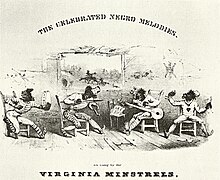
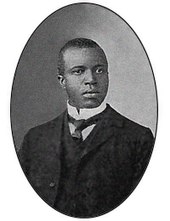
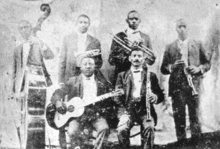
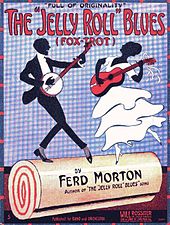
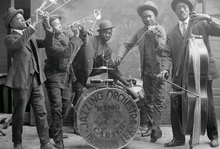
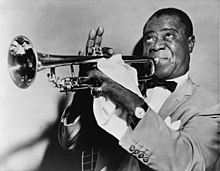


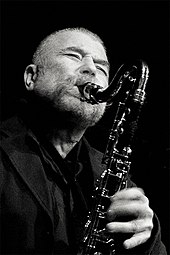
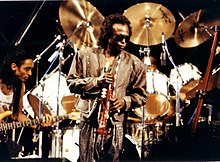
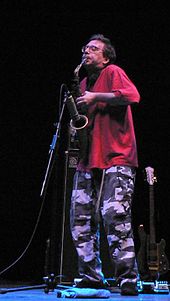

Tidak ada komentar:
Posting Komentar